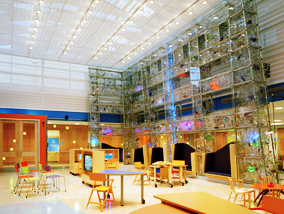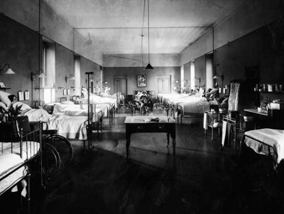
MODERN DESIGNS USE COLOR AND LIGHT

Modern medical center design focuses the user’s physical and emotional needs. Colorful, well-designed, interactive interiors such as New York City’s Claire Tow Pediatric Pavilion at Memorial Sloan-Kettering Cancer Center (designed by Granary Associates) create a vibrant atmosphere for healing. Light-filled spaces, the right wall colors, pieces of art and some of the comforts of home can all improve patients’ spirits.
Many modern hospital designers consider the needs of kids. By having access to computers and multimedia entertainment, patients can be in communication with family, friends and school.
PHOTO: Memorial Sloan-Kettering






